
San Lorenzo Square, translated from Italian: St. Lawrence Square (Piazza di San Lorenzo, Piazza della San Lorenzo) is one of the main and most visited squares in the historical center of Florence, on which the complex of the basilica of the same name rises, historical buildings and palaces are concentrated , and there is a monument to Giovanni delle Banda Nere.
The history of the formation of the square dates back to the time of the radical restructuring of the church of the same name of San Lorenzo, starting in 1418. The square got its name from the basilica.
Piazza San Lorenzo is located in front of the basilica and on the north side of it.
Today, the square is included in the main routes around Florence. It is surrounded by historical buildings, among which there are palaces. In the center of the square stands the monument to Giovanni delle Bande Nere, and nearby is the beautiful Medici Riccardi Palace.
In the buildings around the square there are shops, cafes and restaurants with outdoor tables, there are also accommodation facilities (hotels, apartments)



The dominant feature of San Lorenzo Square is the Basilica of San Lorenzo or St. Lawrence (Basilica di San Lorenzo) - the oldest Florentine Cathedral and one of the largest churches in the city, which was the city cathedral and the parish church of the Medici family.
San Lorenzo is a monumental complex, which is one of the most popular attractions in Florence.
The St. Lawrence complex can be divided into three sites: the basilica with the old sacristy, monasteries, a treasure museum and a crypt; the Medici Library, created by Michelangelo; the new sacristy and the Medici Chapel, created by Michelangelo as the tomb of an influential family.
The complex is decorated with beautiful frescoes, sculptures, sarcophagi, altars, stucco, marbles and semi-precious stones. More about the San Lorenzo Complex…

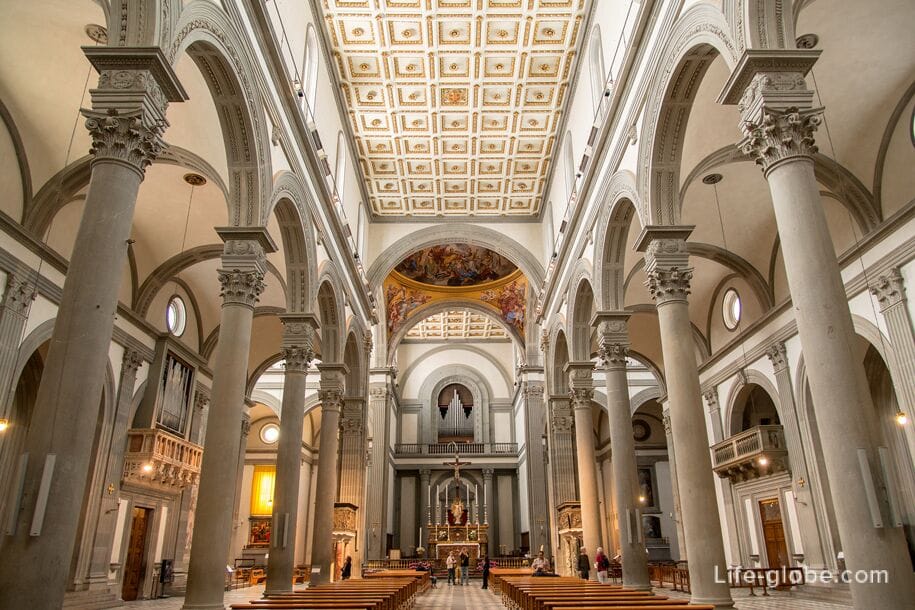
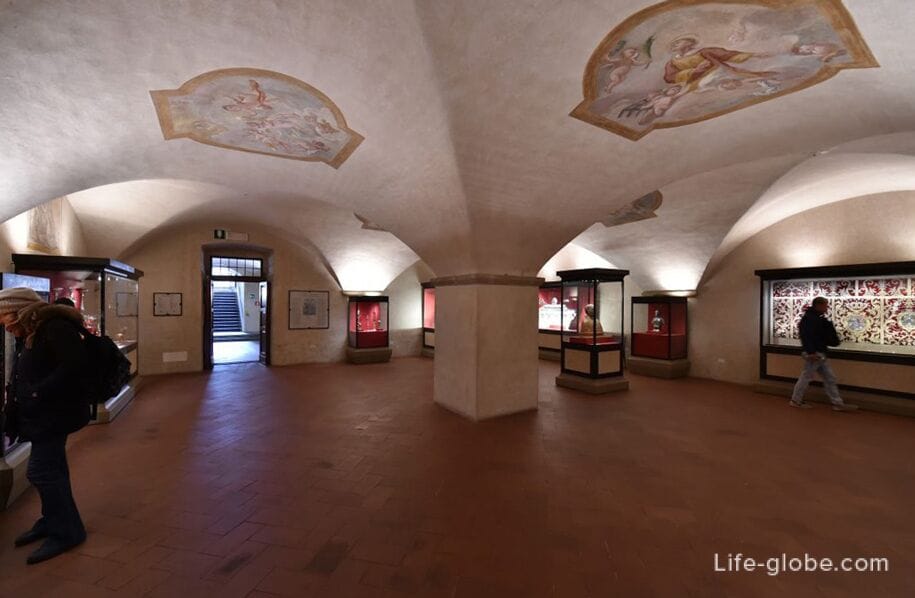
Near the main facade of the basilica stands a monumental monument to Giovanni delle Bande Nere (Monumento a Giovanni delle Bande Nere), who was an Italian Renaissance leader and a representative of Popolano, a cadet branch (or Trebbio) of the Medici family.
The monument was created in 1540 by the Italian sculptor Baccio Bandinelli commissioned by Casimo I Medici, who thus wanted to honor his father, the only significant leader in the history of the Medici family.
Initially, the statue was supposed to be placed inside the Chapel of Negroni in the Basilica of San Lorenzo, and for this reason, the sculptor conceived Giovanni in a sitting warrior pose (which is quite an unusual pose for a leader), but soon Cosimo de' Medici changed his mind, and placed the sculpture in 1592 in the Great Hall of the Palazzo Vecchio in Florence. But, the monumental base of the monument, which for a long time was located in the Neroni chapel inside the Basilica of San Lorenzo, was too large for the palazzo, and eventually the pedestal was installed in Piazza San Lorenzo, where it became known as the "base of San Lorenzo".
In 1812, the Florentine architect Giuseppe Del Rosso turned the base into a fountain for public use. In 1850, a statue from the Palazzo Vecchio was placed on a pedestal.
The statue of Giovanni delle Bande Nere is represented in a Roman cuirass. The leader, without helmet and shoes, holds in his hand, aimed at the knee, a large command staff, which has been interpreted as a broken spear.
The pedestal is an artistic part of the monument; it has an almost cubic shape, decorated at the corners with Doric columns supporting a majestic frame of the same order; garlands followed by a braided bull, and a Greek pedestal. The base is decorated on the long side with a relief with a battle scene in which soldiers bring prisoners and loot to their captain; on the short sides of the pedestal are the Medici coat of arms and enterprises with the characteristic emblem of a diamond ring.
The fountain of the pedestal is characterized by the presence of a lion's head made of white Carrara marble, from which water flows out, collecting in an ellipsoidal pool, wide and located at such a height that it is practically invisible.
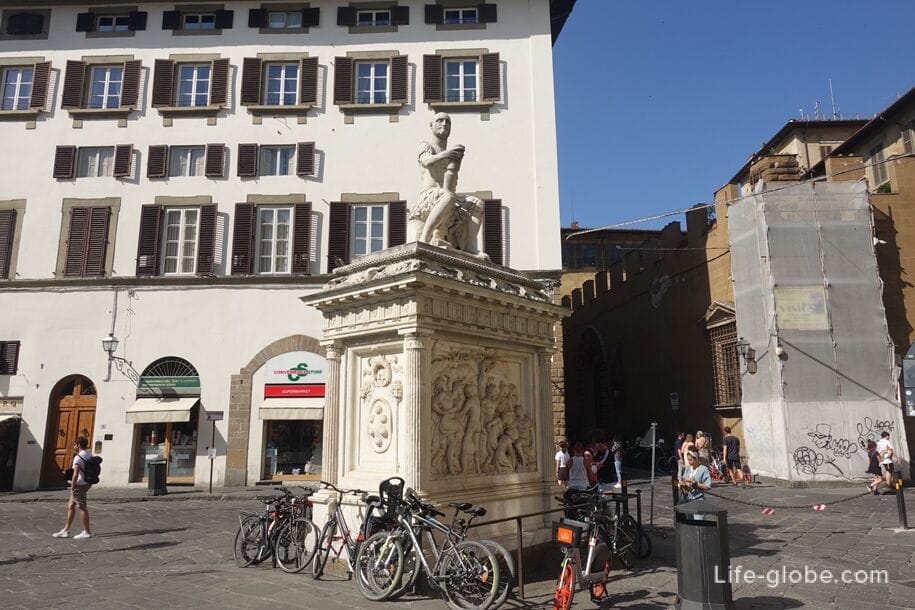

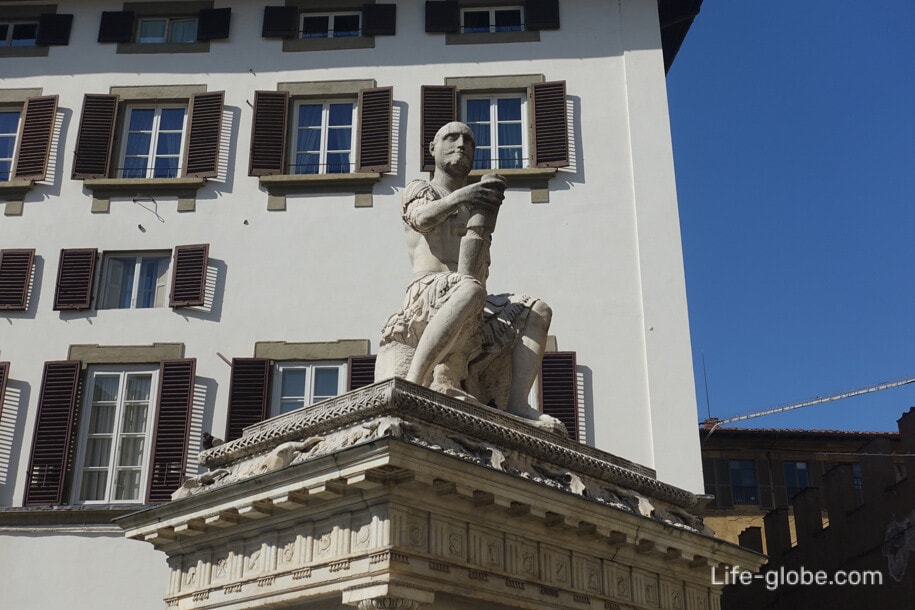
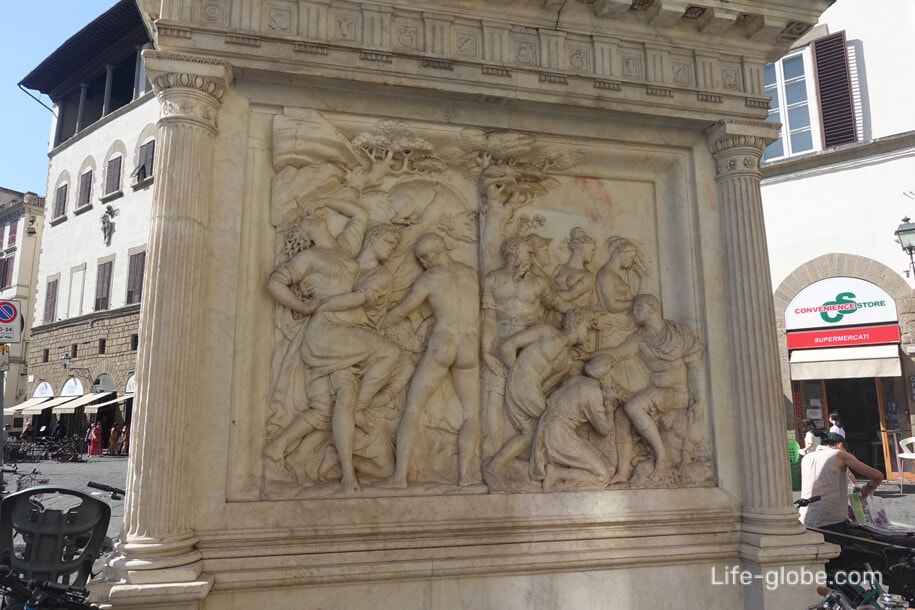
The northern and eastern sides of Piazza San Lorenzo are formed by rows of historical buildings, including: Palazzo Bonaiuti, Palazzo Inghirlami, Palazzo Lotteringhi della Stufa with a combination of elements of the 14th and 15th centuries and the coat of arms of the family, Palazzo della Stufa Traballesi) of the 17th century and the houses of the monastery of San Giovanni Evangelista (Case del convento di San Giovanni Evangelista).
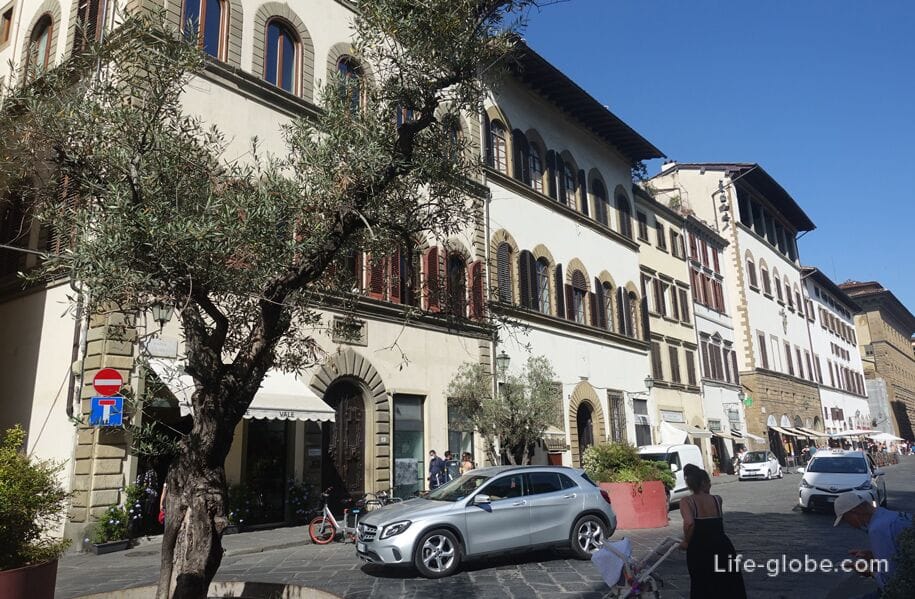
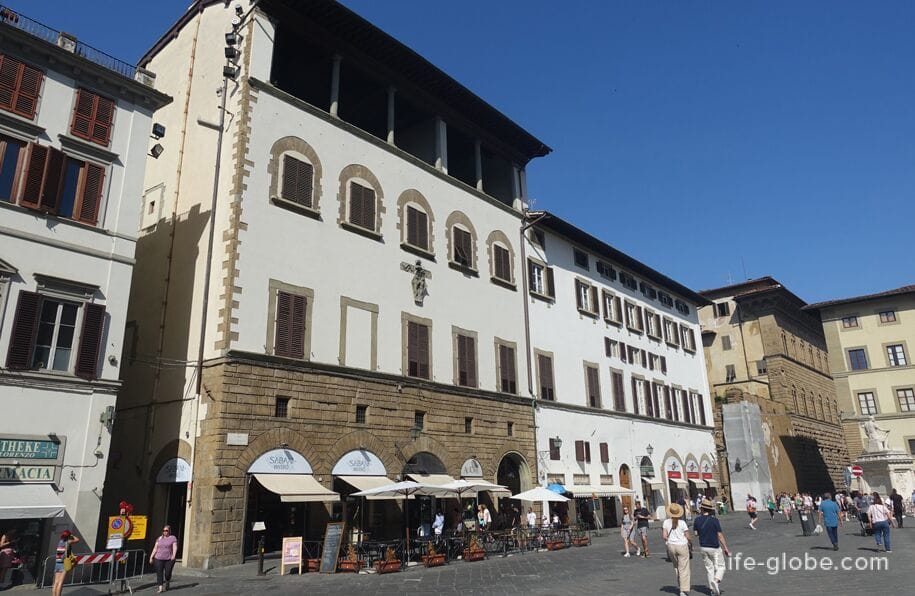
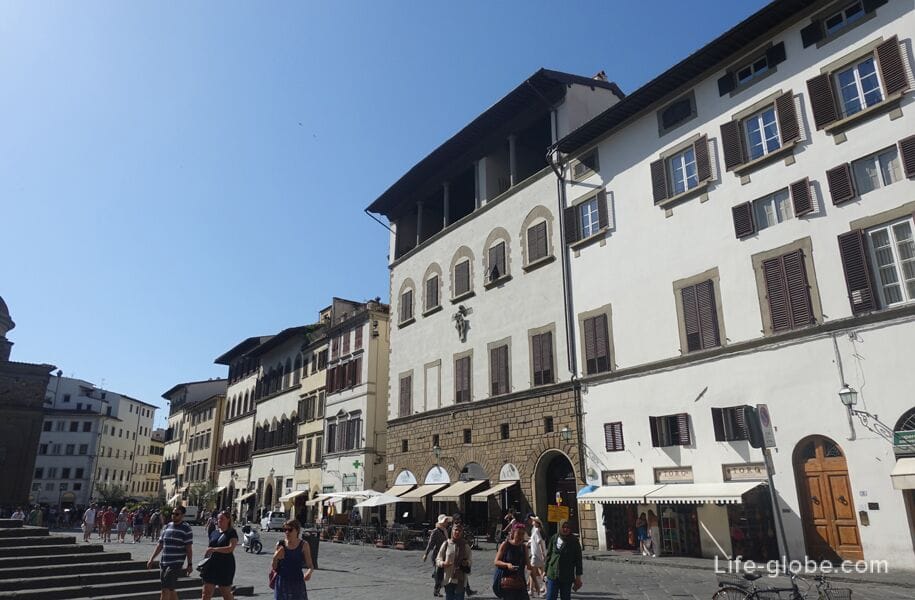
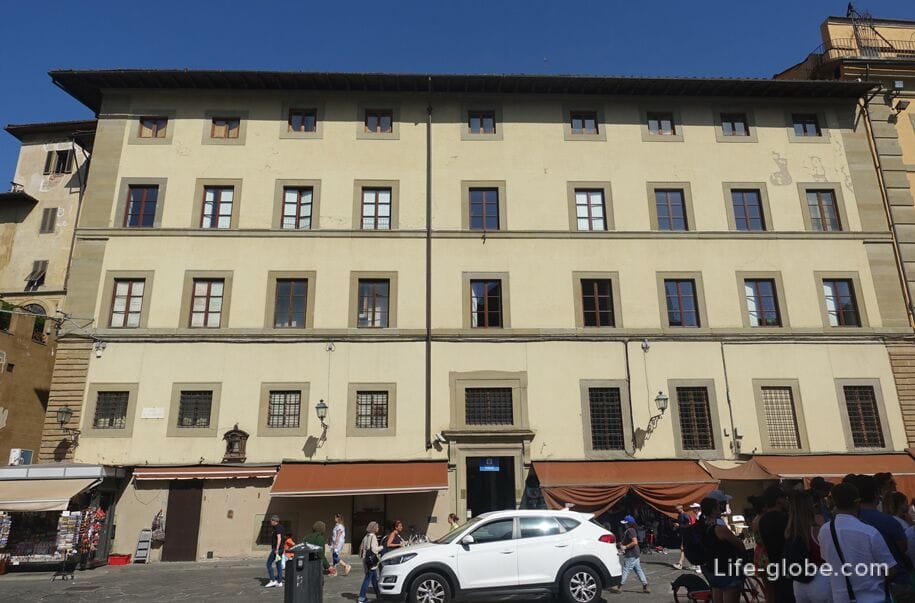
Near San Lorenzo Square, the Medici Riccardi Palace stands out (Palazzo Medici Riccardi, Palazzo Medici Riccardi) - a historical Renaissance palace that was the first residence of the Medici family, and today it is a famous museum with halls, a chapel of the Magi, a courtyard and an adjacent garden. More about the Medici-Riccardi Palace…

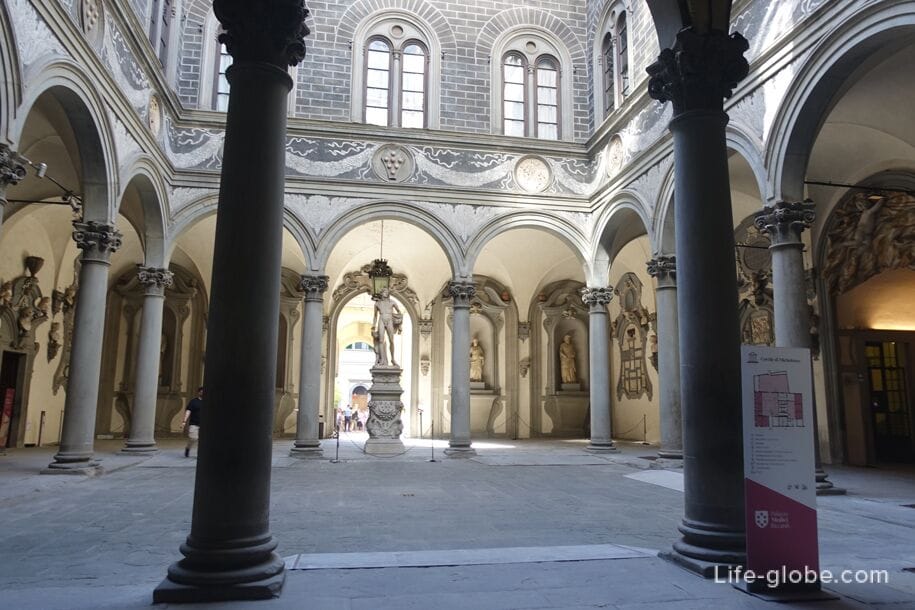

On and near Piazza San Lorenzo, which means in the historical center of Florence, which is very convenient for walking and exploring the sights of the city, you can stop:
5-star Hotel Firenze Number Nine
Palazzo della Stufa Residenza D'Epoca Bed and breakfast
Residenza Medici San Lorenzo Apartments
Acacia Firenze Apartments Cumino-Cannella-Curry
The Artists' Palace Florence Guest House
All accommodation facilities in Florence (hotels, apartments, guest houses, etc.), including those in the historic city center, near Piazza San Lorenzo and more remotely from those, you can view and book here
Piazza San Lorenzo is open to the public 24 hours a day.
Piazza San Lorenzo is located in the historic center of Florence, just 160 meters from the main square of the city - the Duomo Square.
Coordinates of San Lorenzo Square: 43°46'29.2"N 11°15'17.5"E (43.774772, 11.254858).